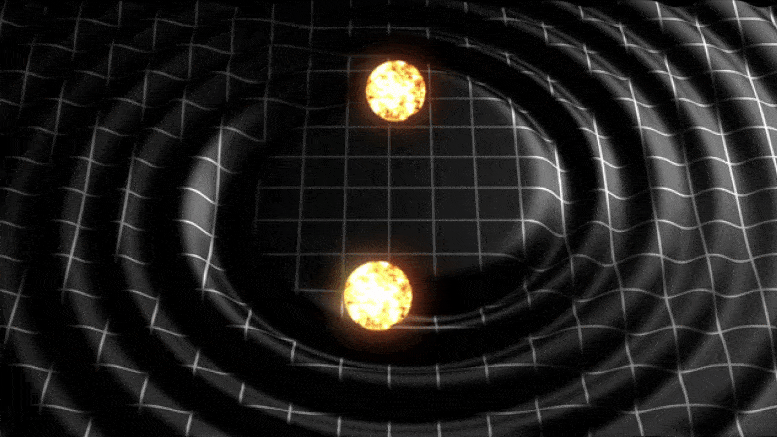Continuous Gravitational Waves in the Lab

Animation illustrating gravitational waves.
Gravitational-waves are ripples in space-time created by distant astronomical objects and detected by large complex detectors (like LIGO, Virgo, and KAGRA). Finding gravitational-wave signals in detector data is a complicated task requiring advanced signal processing techniques and supercomputing resources. Due to this complexity, explaining gravitational-wave searches in the undergraduate laboratory is difficult, especially because live demonstration using a gravitational-wave detector or supercomputer is not possible. Through simplification and analogy, table-top demonstrations are effective in explaining these searches and techniques.
A team of OzGrav scientists, across multiple institutions and disciplines, have designed a table-top demonstration with data analysis examples to explain gravitational-wave searches and signal processing techniques. The demonstration can be used as a teaching tool in both physics and engineering undergraduate laboratories and is to be published in the American Journal of Physics.
Lead author of the project James Gardner (who was an OzGrav undergraduate student at the University of Melbourne during the project and now a postgraduate researcher at the AMIGO to do just that! Deeksha Beniwal, co-author of this study and an OzGrav PhD student at the University of Adelaide explains: “With AMIGO, the portable interferometer, we can easily share how DOI: 10.1119/10.0009409
Read More: Continuous Gravitational Waves in the Lab

